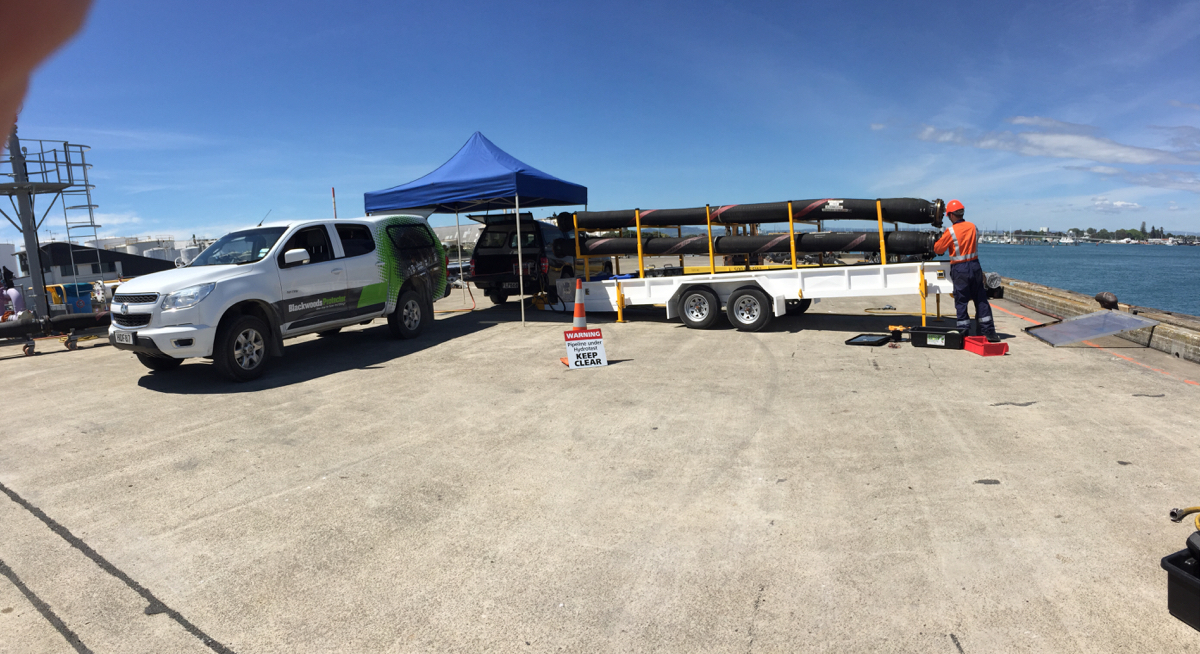Title Page
-
Site conducted
-
Site conducted
-
Conducted on
-
Prepared by
-
Location
STEP 1: SORT
-
Only REQUIRED items in the following categories
are present in the workplace:
Equipment
-
Only required equipment is present. All obsolete, broken, or necessary equipment not required for current projects is removed from the area or red tagged.
- 0 No Effort Made
- 1 Slight Effort
- 2 Moderate Effort
- 3 Average Effort
- 4 Above Average Effort
- 5 Great Results
Tools
-
Only required tools are present. Tools not required for current projects are removed from the area or red tagged.
- 0 No Effort Made
- 1 Slight Effort
- 2 Moderate Effort
- 3 Average Effort
- 4 Above Average Effort
- 5 Great Results
Furniture
-
Only required furniture is present. All obsolete, broken, or unnecessary workbenches, shelves, chairs, lockers, etc. Not required for current projects are removed from the area or red tagged.
- 0 No Effort Made
- 1 Slight Effort
- 2 Moderate Effort
- 3 Average Effort
- 4 Above Average Effort
- 5 Great Results
Spare Parts
-
Only required spare parts and materials are present. Items not required for current projects are removed from the area or red tagged.
- 0 No Effort Made
- 1 Slight Effort
- 2 Moderate Effort
- 3 Average Effort
- 4 Above Average Effort
- 5 Great Results
Paperwork
-
Only required paperwork is present. Outdated or unnecessary memos, instructions, reports, posters, etc. Are removed from the area.
- 0 No Effort Made
- 1 Slight Effort
- 2 Moderate Effort
- 3 Average Effort
- 4 Above Average Effort
- 5 Great Results
All tripping hazards removed from work area
-
All tripping hazards such as electrical wires and equipment cables are removed from working and walking areas.
- 0 No Effort Made
- 1 Slight Effort
- 2 Moderate Effort
- 3 Average Effort
- 4 Above Average Effort
- 5 Great Results
STEP 2: SET IN ORDER
-
Clear identification and proper placement of:
EQUIPMENT AND MACHINERY
-
Equipment/machinery is clearly identified (numbered, named, color coded, etc.) And placed in a properly identified location. Critical maintenance points are clearly marked.
- 0 No Effort Made
- 1 Slight Effort
- 2 Moderate Effort
- 3 Average Effort
- 4 Above Average Effort
- 5 Great Results
Tools
-
Tools have a designated storage area within reach of the user. The location is labeled and a system exists to identify tools that are absent (shadow board, etc.).
- 0 No Effort Made
- 1 Slight Effort
- 2 Moderate Effort
- 3 Average Effort
- 4 Above Average Effort
- 5 Great Results
LOCATIONS FOR CONTAINERS, BINS ,AND BOXES
-
Locations for containers, wip’s, boxes, bins, etc. Are clearly identified via signs or marked/taped lines and properly labeled.
- 0 No Effort Made
- 1 Slight Effort
- 2 Moderate Effort
- 3 Average Effort
- 4 Above Average Effort
- 5 Great Results
Locations for containers, bins & boxes
-
Paperwork is properly labeled and has a clearly identified location away from work surfaces.
- 0 No Effort Made
- 1 Slight Effort
- 2 Moderate Effort
- 3 Average Effort
- 4 Above Average Effort
- 5 Great Results
PPE-REQUIRED WORK AREAS
-
Work areas requiring personal protective equipment (PPE) are clearly marked (floor tape, safety signs/ labels, etc.).
- 0 No Effort Made
- 1 Slight Effort
- 2 Moderate Effort
- 3 Average Effort
- 4 Above Average Effort
- 5 Great Results
STOP SWITCHES AND BREAKERS
-
Stop switches and breakers are highly visible and located for easy access in case of emergency.
- 0 No Effort Made
- 1 Slight Effort
- 2 Moderate Effort
- 3 Average Effort
- 4 Above Average Effort
- 5 Great Results
FIRE SUPPRESSION EQUIPMENT
-
Fire hoses, fire extinguishers, and other emergency equipment are prominently displayed and unobstructed
- 0 No Effort Made
- 1 Slight Effort
- 2 Moderate Effort
- 3 Average Effort
- 4 Above Average Effort
- 5 Great Results
Aisles, forklift lanes, pedestrian walkways and hazardous areas are clearly marked
-
Floors/aisles are clearly marked; forklift lanes, exits, hazards, walkways, aisles, etc. Are all marked with visible lines (floor tape/floor paint).
- 0 No Effort Made
- 1 Slight Effort
- 2 Moderate Effort
- 3 Average Effort
- 4 Above Average Effort
- 5 Great Results
Work areas are ergonomically friendly
-
Working conditions are ergonomic. Items needed for daily work are stored at appropriate heights, anti-fatigue mats are in place, related safety signage is displayed clearly, etc.
- 0 No Effort Made
- 1 Slight Effort
- 2 Moderate Effort
- 3 Average Effort
- 4 Above Average Effort
- 5 Great Results
Emergency exits are marked and unobstructed
-
The workplace layout accommodates unobstructed exit in case of emergency. The emergency exit route is labeled.
- 0 No Effort Made
- 1 Slight Effort
- 2 Moderate Effort
- 3 Average Effort
- 4 Above Average Effort
- 5 Great Results
STEP 3: SHINE
-
Workstation is sufficiently clean in following areas:
Tools
-
All tools are kept clean and in good working order. When possible, tools are stored in a manner that facilitates this.
- 0 No Effort Made
- 1 Slight Effort
- 2 Moderate Effort
- 3 Average Effort
- 4 Above Average Effort
- 5 Great Results
EQUIPMENT
-
Machines, dies, and other equipment including electrical boxes are kept clean and painted.
- 0 No Effort Made
- 1 Slight Effort
- 2 Moderate Effort
- 3 Average Effort
- 4 Above Average Effort
- 5 Great Results
Work Surfaces
-
Work surfaces (workbenches) are kept clean and painted.
- 0 No Effort Made
- 1 Slight Effort
- 2 Moderate Effort
- 3 Average Effort
- 4 Above Average Effort
- 5 Great Results
WALLS, PARTITIONS, AND RAILS
-
Walls, partitions, rails, etc. Are kept clean and painted.
- 0 No Effort Made
- 1 Slight Effort
- 2 Moderate Effort
- 3 Average Effort
- 4 Above Average Effort
- 5 Great Results
FLOORS
-
Floors are free from dirt, debris, oil, parts, hardware, empty boxes, etc. And all drains (if applicable) are clear of debris and clogs.
- 0 No Effort Made
- 1 Slight Effort
- 2 Moderate Effort
- 3 Average Effort
- 4 Above Average Effort
- 5 Great Results
PAPERWORK
-
Paperwork is not torn and is kept clean and protected from dirt and other contaminants.
- 0 No Effort Made
- 1 Slight Effort
- 2 Moderate Effort
- 3 Average Effort
- 4 Above Average Effort
- 5 Great Results
CONTAINERS, BINS, LABELS, AND SIGNS
-
Containers, boxes, bins, etc. Are clean and not cracked, torn, or otherwise damaged. When stored, they are neatly stacked in their correct locations.
- 0 No Effort Made
- 1 Slight Effort
- 2 Moderate Effort
- 3 Average Effort
- 4 Above Average Effort
- 5 Great Results
CLEANING EQUIPMENT IS NEATLY STORED AND EASY TO FIND
-
undefined
- 0 No Effort Made
- 1 Slight Effort
- 2 Moderate Effort
- 3 Average Effort
- 4 Above Average Effort
- 5 Great Results
CLEANING SCHEDULE IS POSTED AND ACTIVELY USED
-
undefined
- 0 No Effort Made
- 1 Slight Effort
- 2 Moderate Effort
- 3 Average Effort
- 4 Above Average Effort
- 5 Great Results
STEP 4: STANDARDIZE
Tools, equipment, paperwork is stored and returned to designated areas
-
Tools, equipment, paperwork, furniture, etc. Are stored neatly in designated areas and are returned to their proper homes immediately after use.
- 0 No Effort Made
- 1 Slight Effort
- 2 Moderate Effort
- 3 Average Effort
- 4 Above Average Effort
- 5 Great Results
Equipment maintenance records visible and communicate when last maintenance occurred
-
Equipment maintenance records are visible and clearly state when maintenance has occurred
- 0 No Effort Made
- 1 Slight Effort
- 2 Moderate Effort
- 3 Average Effort
- 4 Above Average Effort
- 5 Great Results
Trash cans and other waste-preventive tools are present
-
Product waste (shavings, containers, liquids, wrappers, etc.) Is regularly cleaned up and removed from the workplace. Preventative measures have been implemented to ensure the workplace meets 5s guidelines (e.G. Systems that do not allow waste to accumulate).
- 0 No Effort Made
- 1 Slight Effort
- 2 Moderate Effort
- 3 Average Effort
- 4 Above Average Effort
- 5 Great Results
Work conditions meets all appropriate standards
-
Paperwork is properly labeled and has a clearly identified location that is away from work surfaces. The work environment satisfies the requirements of the work being performed (lighting brightness and color, temperature, air flow and quality, etc.).
- 0 No Effort Made
- 1 Slight Effort
- 2 Moderate Effort
- 3 Average Effort
- 4 Above Average Effort
- 5 Great Results
Results of previous audit is posted and visible
-
The results of the previous audit are posted and clearly visible to the entire team.
- 0 No Effort Made
- 1 Slight Effort
- 2 Moderate Effort
- 3 Average Effort
- 4 Above Average Effort
- 5 Great Results
Team has addressed issues expressed in previous audits
-
Areas for improvement identified during the previous audit have been addressed and completed.
- 0 No Effort Made
- 1 Slight Effort
- 2 Moderate Effort
- 3 Average Effort
- 4 Above Average Effort
- 5 Great Results
STEP 5: SUSTAIN
Management has participated in audit within the past 3 audit cycles
-
A member of management has participated in a 5s activity such as an audit within the past 3 audit periods.
- 0 No Effort Made
- 1 Slight Effort
- 2 Moderate Effort
- 3 Average Effort
- 4 Above Average Effort
- 5 Great Results
5S incentive program is in place and active
-
Recognition is given to teams who get involved in 5s activities. Time and resources are allocated to 5s activities (e.G. Designated daily/weekly clean-up time, 5s team leader)
- 0 No Effort Made
- 1 Slight Effort
- 2 Moderate Effort
- 3 Average Effort
- 4 Above Average Effort
- 5 Great Results
All team members have weekly 5S duties
-
All operators, team leaders, supervisors, etc., Are assigned 5s activities to complete at least once a week
- 0 No Effort Made
- 1 Slight Effort
- 2 Moderate Effort
- 3 Average Effort
- 4 Above Average Effort
- 5 Great Results
Team strives to make improvements independent of audits
-
The team takes the initiative to make improvements to the workplace that were not identified during the last audit.
- 0 No Effort Made
- 1 Slight Effort
- 2 Moderate Effort
- 3 Average Effort
- 4 Above Average Effort
- 5 Great Results









